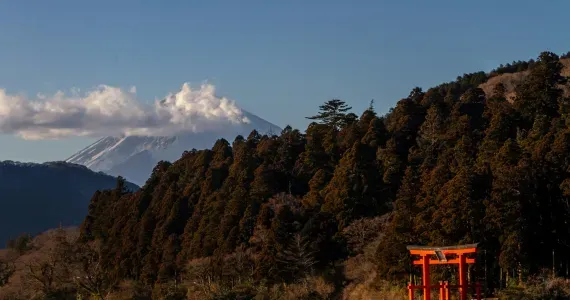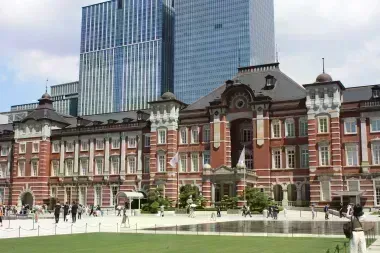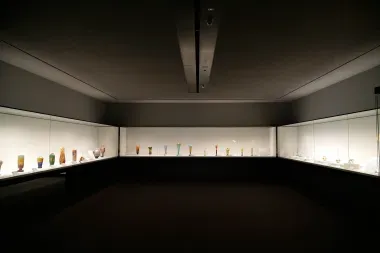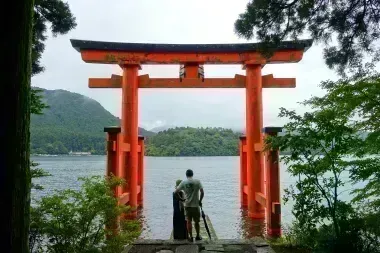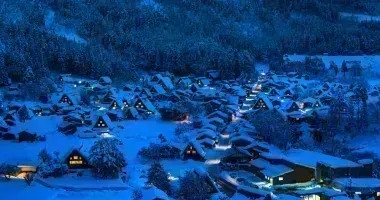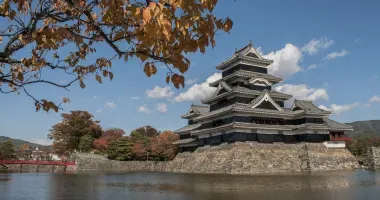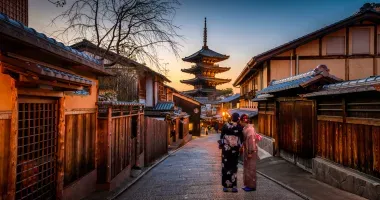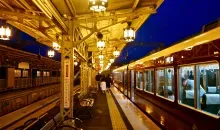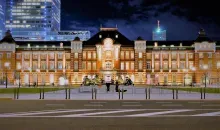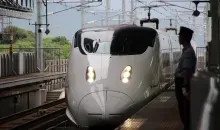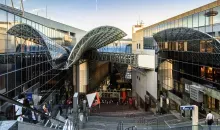How to get from Tokyo to Hakone
Hakone in Kanagawa Prefecture is an essential destination in the Kanto Region, an area rich in natural beauty and a renowned destination for art culture. It's easily accessible from Tokyo’s Shinjuku Station via the Odakyu Line.
Getting to Hakone from Tokyo with the Odakyu Line
(*Included with Hakone Free Pass)
Odawara Station
The journey to Hakone takes around two hours and entails departing from Shinjuku Station in central Tokyo, riding out to Odawara Station, then transferring and continuing to ride to Hakone-Yumuto Station. Individual tickets can be purchased with the option to reserve seats, but the journey is also covered, plus more, with the Hakone Free Pass, issued by Odakyu. Prices range from 6,260 to 7,020 Japanese yen. Between the two destinations is around 111 kilometers (70 miles).
The first train out towards this area from Shinjuku Station departs at 5:00 AM, with the last train leaving at 12:43 AM the next day.
Train lines available for this itinerary
| Odakyu Line Trains |
*NOTE: To ride the Romance Car with the Hakone Free Pass, there is an additional express train surcharge
Reserve tickets for Tokyo to Hakone!
Reserving seats on the Shinkansen
On Shinkansen bullet trains, individual ticket holders and Japan Rail Pass holders can reserve seats in advance of boarding. Reservations are typically not required for Shinkansen bullet trains because they frequently have non-reserved cars with seats available on a first-come, first-served basis. These are often the car numbers 1-4.
On certain trains, reservations are required for every car. However, it is highly recommended that all travelers try to book tickets during the busiest travel seasons in Japan, which are the spring and the New Year's holiday. When buying a single ticket, a reserved seat costs extra, but Japan Rail Pass holders are free of this charge.
Oversized baggage on the Shinkansen
A variety of requirements must be fulfilled in order for passengers with large suitcases to board the bullet train. According to Japan Railway regulations, luggage over 160 cm in length, width, and height needs to be checked into the special bulky baggage section at the back of the train car. Owners of such bags must additionally make reservations for seats near this section. Please be advised that you cannot board the Shinkansen with luggage that are larger than 250 cm overall.
Baby carriages, musical instruments in cases, and sporting goods (bikes, snowboards, etc.) in cases are exempt from the baggage restrictions.
Exploring Tokyo
Tokyo, Japan's capital and the largest city in the world by population, is a popular starting point for travelers on the "Golden Route" since it offers something for everyone. Almost every rail station in this big city offers something exciting to discover, whether you choose to explore the brightly lit nighttime streets of Shinjuku or the more laid-back, hip neighborhoods like Koenji and Gakugei Daigaku.
Speaking of train stations, Tokyo has an extensive and well-developed rail system that makes traveling to your destination easy and is much more convenient for those who have a Japan Rail Pass. Using key hubs like Shinjuku, Shibuya, Tokyo, or Ikebukuro Stations, various train lines, including those run by JR and the Subway Metro System, provide widespread access to most parts of the city. Selecting a rail station that you might not be familiar with is a simple way to explore a new neighborhood. There are chic stores, quaint cafes, and a variety of other sights to view outside.
Tokyo is a must-visit location for foodies on vacation, offering an infinite variety of top-notch dining options ranging from modest neighborhood cafes to internationally renowned restaurants. Tokyo has a diverse range of dining options, ranging from high-end, highly regarded restaurants to quick, simple, and reasonably priced street cuisine.
In fact, Tokyo is home to the majority of the world's Michelin-starred restaurants. Hip areas like Hatagaya and Setagaya are popular for their vibrant sake and wine bars, while Higashi Azabu has a plethora of well-known eateries that make for the ideal evening meal if you're looking for the best food experience.
Wandering around Shinjuku Station is an endeavor that can occupy a whole day (or more, if you wish). The densely populated central area is a hub for countless shops, restaurants, and other attractions, and the train station itself is actually the most busy one in the world, with around 3.5 million commuters accessing it on a daily basis. But if you’re intimidated by large crowds, fear not, as only a short walk away from the central part of Shinjuku are a number of more quaint neighborhoods and backstreets. Venture out a bit to Yoyogi or the neighborhood of Hatsudai to see what the more residential parts of central Tokyo are like!
Exploring Hakone
This gem in Kanagawa Prefecture is a short trip away from Tokyo and is home to some of the country’s most beautiful sites as well as being a center for art and culture. Here, some of the most awe-inspiring views of Mount Fuji can be seen, with the glistening Lake Ashinoko hosting a number of fun attractions and activities to engage in.
From Tokyo, Hakone is easily accessible from Shinjuku Station by way of the Odakyu Line services. Odakyu also issues the Hakone Free Pass, which allows visitors to take the train out to Hakone and utilize public transportation within the region.
Upon arriving in Hakone, many will note the unobstructed views of Mount Fuji, so clear that it almost looks like it's being projected onto the background. One of the best ways to take in the view? relaxing in the warm onsen hot springs that are prevalent in this area due to the proximity to volcanic activity.
Lake Ashinoko is the other major natural spectacle to see in Hakone. The surface of the water hosts a number of sightseeing boats, including one that is based off of an old, western-style pirate ship. On the coasts of Lake Ashinoko, travelers can rest and enjoy their time on the number of beaches that line the coastal trail, and one of Hakone’s most iconic symbols is that of the Torii gate of Hakone Shrine that leads out onto the lake’s waters. Try to go early in the morning to beat the crowds and enjoy the shrine grounds in peace!
For art lovers, Hakone is home to an unrivaled number of different art museums. The Hakone Open-Air Museum is a favorite of overseas and domestic travelers alike for its varied exhibitions and installations in an open-air environment, as the name implies.
The POLA Art Museum is also a staple destination for the Kanto region as a whole and is home to an impressive collection of Monet paintings for visitors to see.
Getting to Hakone from Shinjuku Station in Hakone entails taking the Odakyu Line out to Hakone-Yumuto Station with a transfer at Odawara Station, which is about an 80-minute journey. Hakone-Yumuto is located directly in the charming backdrop of Hakone and is actually within the proximity of a number of natural onsen hot spring bathhouses, which may serve as a great initial place to visit.
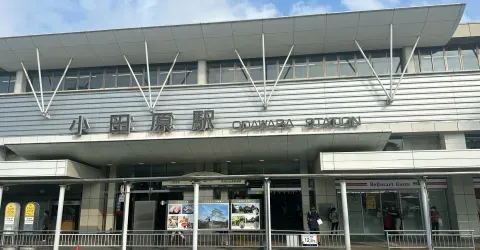
Odawara Station
@Wikimedia
From Skytree to Fuji
One of the most definitive getaway destinations in Japan, Hakone is a picturesque location in Kanto that strongly contrasts with the bustling Tokyo metropolitan area only a few hours away, but in no way compromises enjoyment and charm. Make your way out to this spot in Kanagawa for a day trip for a major leg of your Japan travel itinerary easily with the Odakyu Line, either with the Hakone Free Pass or an individual ticket with or without a reserved seat.

